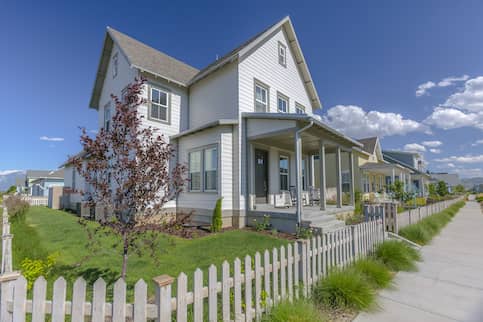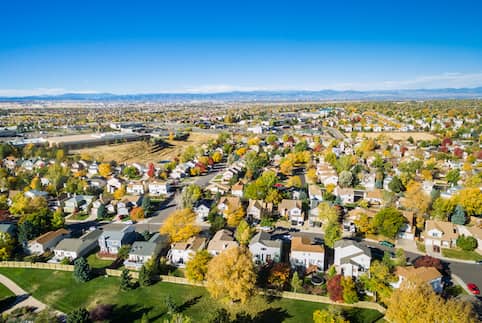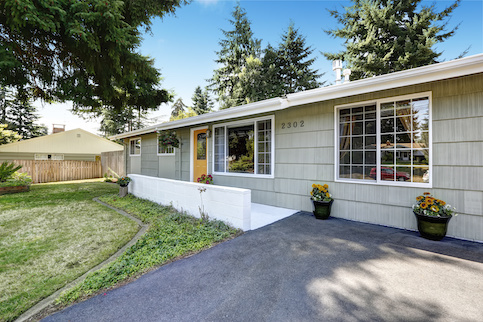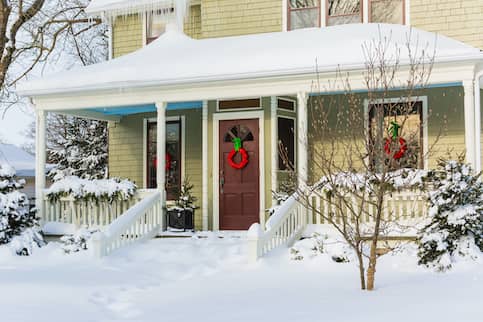The 10 Best Places To Live Considering Climate Change In 2023
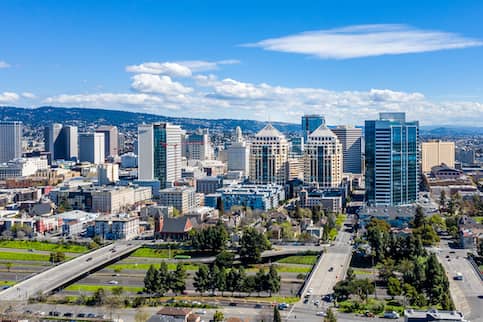
The effects of climate change are all around us. From an increased frequency of natural disasters to extreme temperature changes, 34 states in the United States have submitted a climate action plan or are in the process of developing one to combat these effects.1
Luckily, there are still places experiencing fewer effects of climate change due to location and resistance. These major cities are also taking the necessary steps to protect their area from the effects of climate change.
We analyzed data from the house price index per state in Q1 2022,2 the comfort index,3 climate change risk,4 climate action plans5 and the cumulative resistance screening index6 (CRSI) to gather our estimates on the best places to live if you’re concerned about the effects of climate change. To learn more about how we ranked the best climate change-resilient cities to live in, jump to the methodology section.
Learn which cities are the best places to live for climate change, plus how climate change can factor in when buying a new home.
Key Findings
- Sacramento, California is the best place to live for climate change in 2022.
- 60% of the top 10 places to live in the U.S. for climate change are in California.
1. Sacramento, California
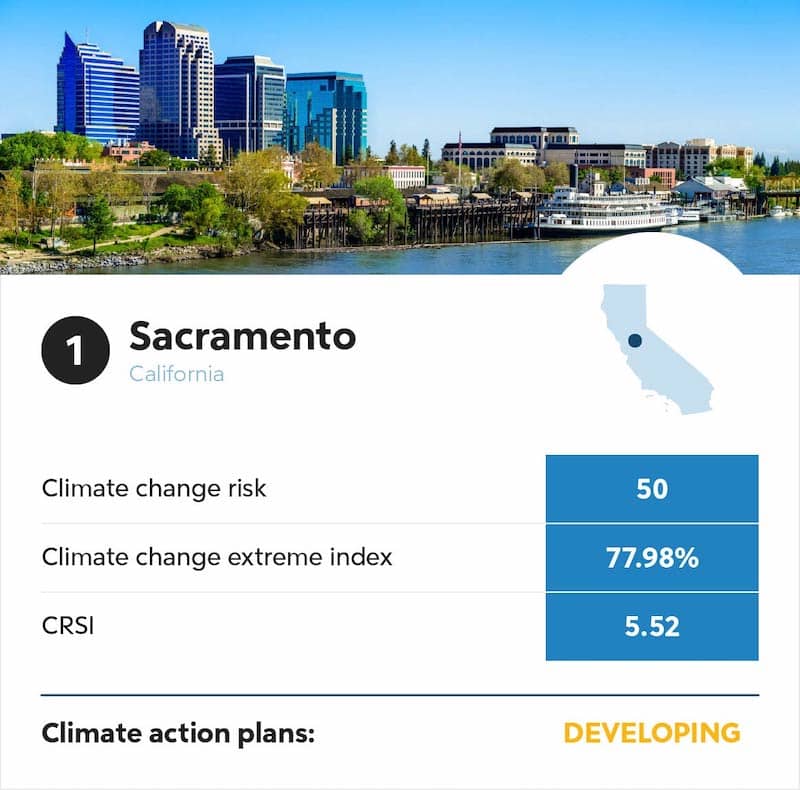
Cost of living index: 118.2
Climate change extreme index: 77.98%
Social vulnerability index7: 55
Sacramento is the state capital of California and known as the City of Trees – a fitting name for the most resilient place to live regarding climate change. The name is in reference to its crowded canopies, which provided much-needed shade to settlers during the California Gold Rush.
The city has a rich and diverse culture, with a variety of ethnic subcultures and historical roots going back more than 150 years. Sacramento has climate action plans in the development stage and a low risk of natural disasters like large floods, fires and droughts.
See What You Qualify For
Home Purchase
Home Refinance
Tap Into Equity
2. Stockton, California
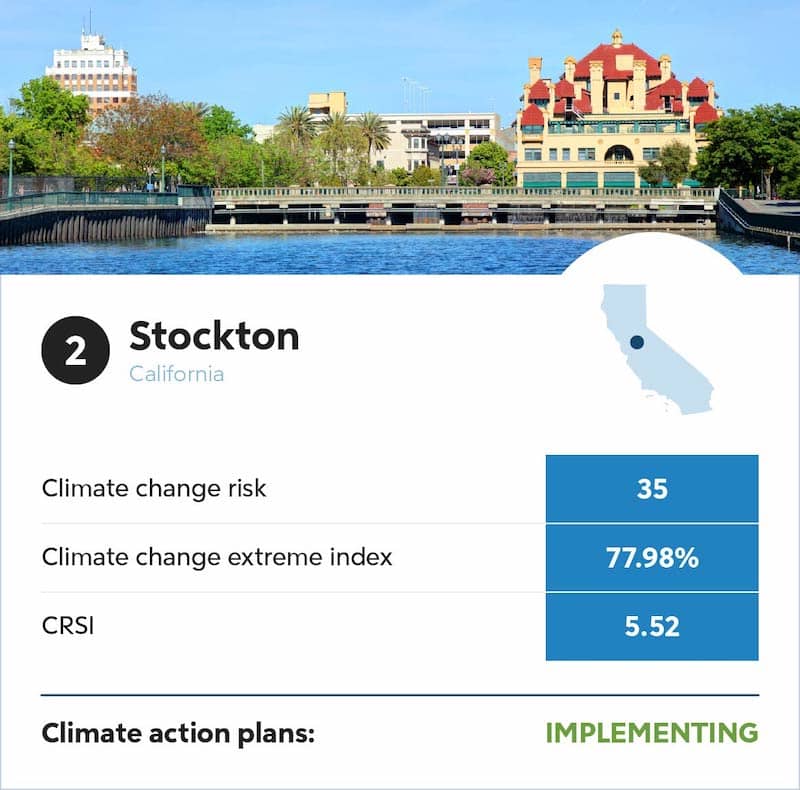
Cost of living index: 113.9
Climate change extreme index: 77.98%
Social vulnerability index: 64.9
Stockton is next on the list and is known for being a part of the California Delta, a popular boating and fishing destination. Sitting in the heart of the state, Stockton is in proximity to major California destinations, like San Francisco and Yosemite.
The city has a temperate climate, which means residents don’t experience extreme temperature changes. Stockton has a low-risk range across the board for natural disasters and has a climate action plan in place, along with a climate action plan advisory committee.
3. San Jose, California
Cost of living index: 214.5
Climate change extreme index: 77.98%
Social vulnerability index: 2.1
Known as the capital of Silicon Valley, San Jose is also an ideal living location that experiences minimal climate extremes. With 257 sunny days and 17 inches of rain per year on average, it’s hard to beat.
Plus, the city of San Jose has a climate action plan in place called Climate Smart San Jose. It’s a community-wide initiative to reduce air pollution, decrease water usage and improve the quality of life in the area.
4. Portland, Oregon
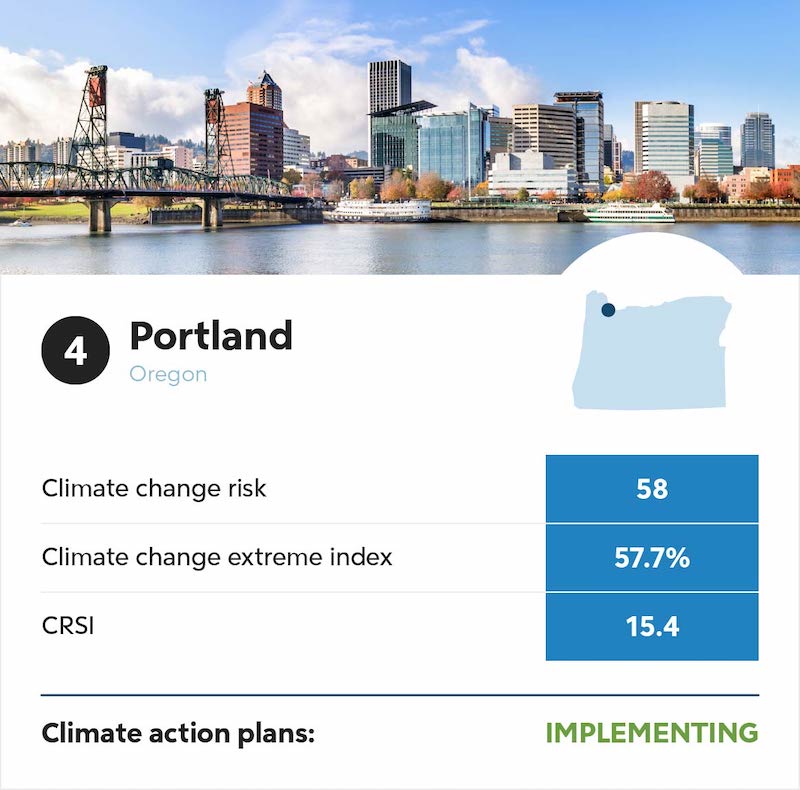
Cost of living index: 130.8
Climate change extreme index: 57.7%
Social vulnerability index: 39.4
The Pacific Northwest is the most climate-resilient area in the U.S., with the highest cumulative resistance screening index at 15.4. Plus, Portland was the first U.S. city to create an action plan for cutting down on carbon.
That’s why it’s no surprise to see Portland, Oregon as a top-ranking city. The city is well known as a hub for those who enjoy adventuring in the outdoors. Portland also has plenty of quirky and trendy spots to explore, from countless microbreweries to popular food trucks.
5. Spokane, Washington
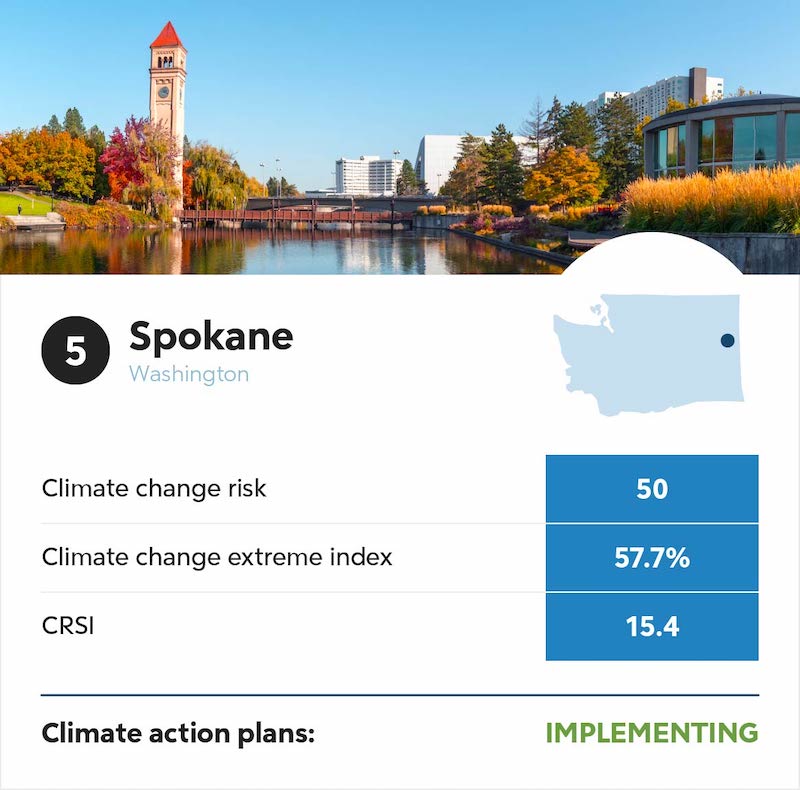
Cost of living index: 92.3
Climate change extreme index: 57.7%
Social vulnerability index: 31.7
Spokane, Washington, may not be the first city that comes to mind when searching for the best climate-friendly cities, but its low climate risk and low extreme index make it a top contender.
Sitting on the eastern side of Washington state, Spokane is known for its beautiful nearby trails and short distance to stunning bodies of water, like Lake Coeur d’Alene. Known as the Lilac City, Spokane also hosts the annual Spokane Lilac Festival, which dates back to 1947.
6. Tucson, Arizona
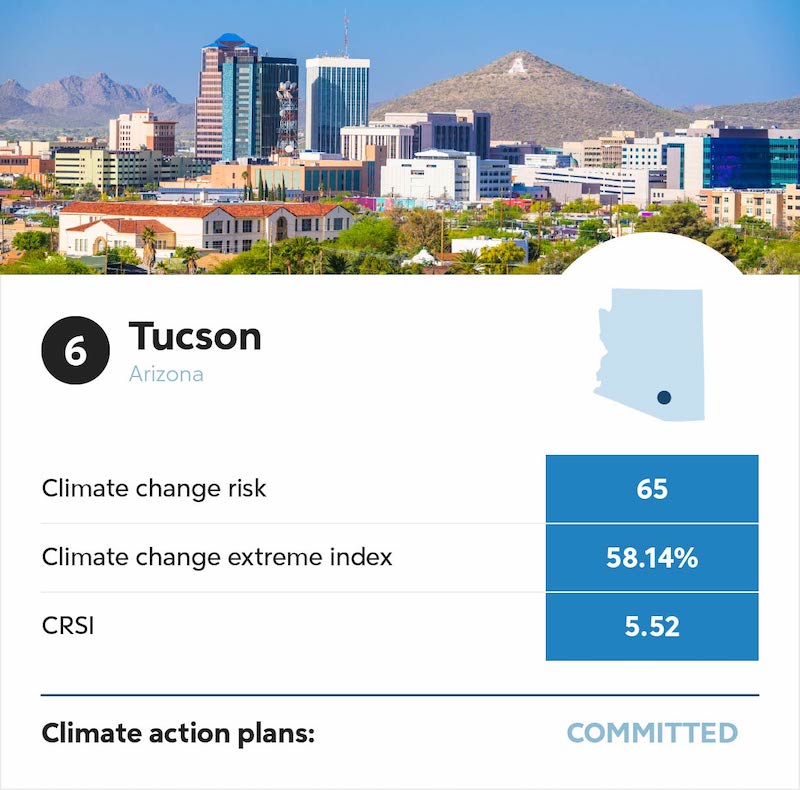
Cost of living index: 91.6
Climate change extreme index: 58.14%
Social vulnerability index: 83.3
If you’re looking to settle somewhere with almost year-round sun, Tucson is the place to be. It sits well under the U.S. average cost of living and has a moderate CRSI score of 5.52. Potential homeowners should be cautious of extreme summer heat and drought in the Tucson area. However, Tucson has a very low climate risk for other natural disasters, like fires.
Plus, the University of Arizona and the city of Arizona are working together on their Climate Action and Adaptation Plan with the goal to minimize city-wide carbon emissions.
7. Fremont, California
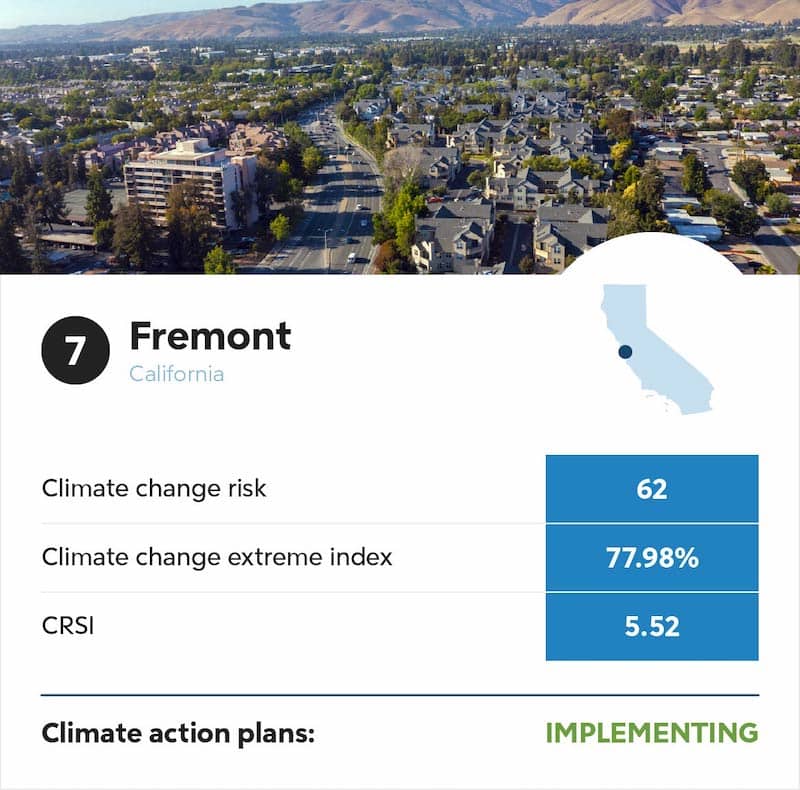
Cost of living index: 227.3
Climate change extreme index: 77.98%
Social vulnerability index: 17.4
Sitting just a couple miles from the San Francisco Bay, Fremont is known for its rich history of frontier settlers and film production. If you enjoy the art of silent films, Fremont is home to the Niles Essanay Silent Film Museum.
Apart from its historical gems, Fremont has a moderate CRSI score of 5.52 and the city has a timeline to present its climate action plan by the beginning of 2023.
8. Oakland, California
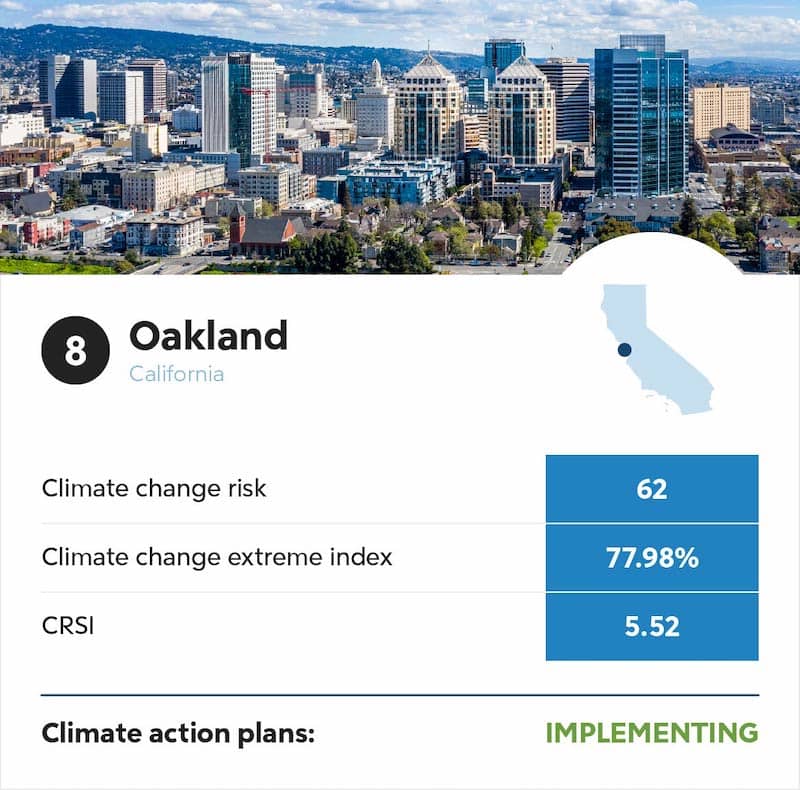
Cost of living index: 174.4
Climate change extreme index: 77.98%
Social vulnerability index: 17.4
The Bay Area shines on this list, with Oakland, California, sitting in eighth place. Oakland is well known for Reinhardt Redwood Regional Park, a 1,800-acre region of redwood trees. In the center of Oakland, you’ll find Lake Merritt, one of the U.S.’s first official wildlife refuges.
The city of Oakland established the 2030 Equitable Climate Action Plan in an effort to reduce climate emissions and adapt to changing climate conditions. The Oakland City Council also recently adopted a 2045 carbon neutrality goal, with the hope of a dramatic reduction in the city’s greenhouse gas emissions.
9. San Francisco, California
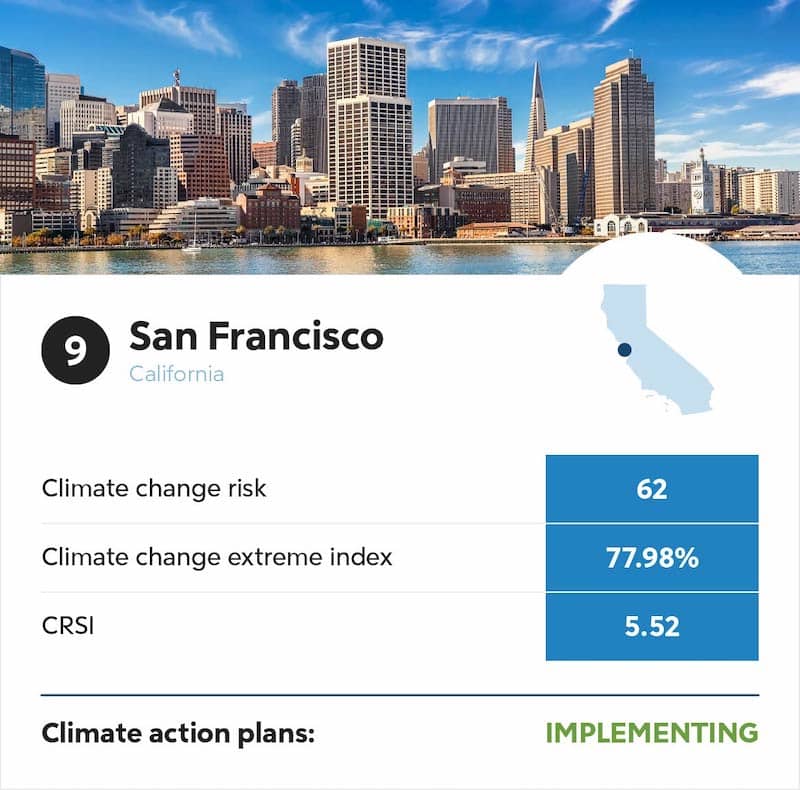
Cost of living index: 269.3
Climate change extreme index: 77.98%
Social vulnerability index: 21.3
If you’re looking for a West Coast city with no limits on activities and attractions, check out San Francisco. Popular sightseeing landmarks include the Golden Gate Bridge, Alcatraz and Pier 39. If you’re willing to deal with the higher cost of living, San Francisco has a moderate climate risk and moderate CRSI score.
You can check out the 2021 Climate Action Plan developed by the San Francisco Department of Environment for the city’s plans on combating climate change and promoting resilience.
10. Reno, Nevada
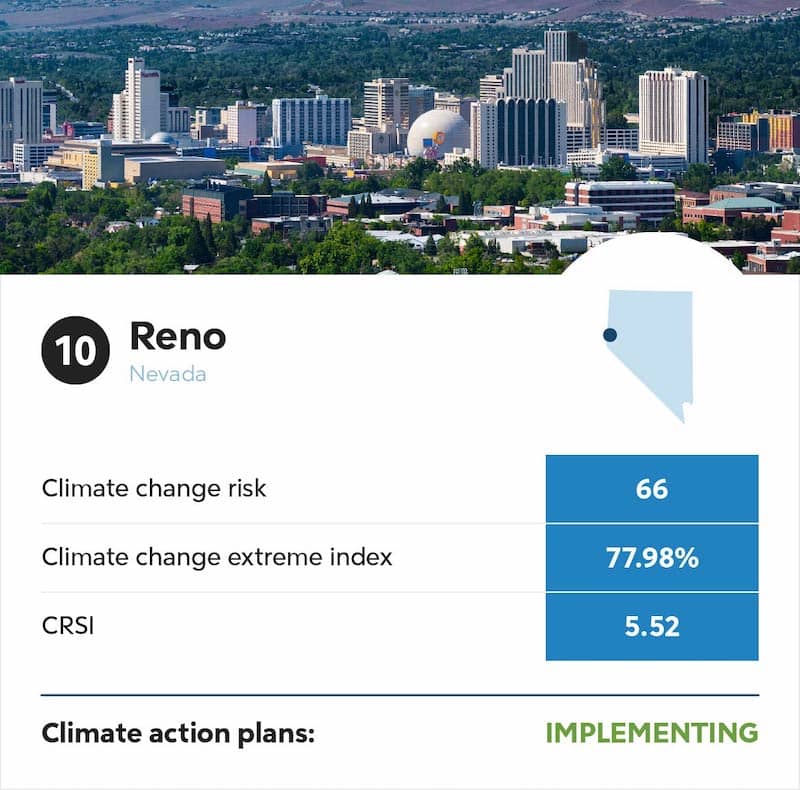
Cost of living index: 116.2
Climate change extreme index: 77.98%
Social vulnerability index: 54.3
Residing in the Southwest region of the U.S., Reno is the smaller version of Las Vegas’ casinos and nightlife. However, Reno experiences few effects of climate change, other than the extreme heat during the summer months.
Reno also has the same CRSI score as the other California cities listed above. Reno Resilience’s Sustainability and Climate Action Plan has a goal to reduce city greenhouse gas emissions by 28% by 2025.
Most Resilient Places To Live Considering Climate Change
Below are the top 20 most resilient places to live regarding climate change in 2022.
Rank | City | Q1 2022 All-Transactions House Price Index | Climate Change Risk | Climate Change Extreme Index | CRSI |
|---|---|---|---|---|---|
1 | Sacramento, CA | 868.3 | 50 | 77.98% | 5.52 |
2 | Stockton, CA | 868.3 | 35 | 77.98% | 5.52 |
3 | San Jose, CA | 868.3 | 47 | 77.98% | 5.52 |
4 | Portland, OR | 778 | 58 | 57.7% | 15.4 |
5 | Spokane, WA | 910.83 | 50 | 57.7% | 15.4 |
6. | Tucson, AZ | 644.43 | 65 | 58.14% | 5.52 |
7. | Fremont, CA | 868.3 | 62 | 77.98% | 5.52 |
8. | Oakland, CA | 868.3 | 62 | 77.98% | 5.52 |
9. | San Francisco, CA | 868.3 | 62 | 77.98% | 5.52 |
10. | Reno, NV | 554.11 | 66 | 77.98% | 5.52 |
11. | Riverside, CA | 868.3 | 41 | 77.98% | 5.52 |
12. | Bakersfield, CA | 868.3 | 44 | 77.98% | 5.52 |
13. | Aurora, CO | 774.7 | 66 | 58.14% | 6.48 |
14. | Denver, CO | 774.7 | 67 | 58.14% | 6.48 |
15. | Seattle, WA | 910.83 | 72 | 57.7% | 15.4 |
16. | Santa Clarita, CA | 868.3 | 55 | 77.98% | 5.52 |
17. | Fort Wayne, IN | 410.2 | 75 | 34.86% | 5.48 |
18. | Dallas, TX | 458.99 | 57 | 18.64% | 3.06 |
19. | Fresno, CA | 868.3 | 77 | 77.98% | 5.52 |
20. | Phoenix, AZ | 644.43 | 79 | 58.14% | 5.52 |
Climate Change Home Buying FAQ
Keep reading to learn more about how climate change can affect your home buying journey.
Is It Important To Factor Climate Change Into Home Buying Decisions?
As a home buyer, it’s becoming more important to factor climate change into your home buying decisions for a few reasons. When looking at an area you’re interested in, you should be cognizant of whether the region has been experiencing extreme weather or natural disasters, like consistent wildfires or floods.
You should also be knowledgeable about the county or city’s formal climate action plans or goals and whether they’re being implemented. If the city is becoming more prone to experiencing the effects of climate change and isn’t taking steps to protect itself, it may be best to take a look at other areas if you plan to stay in one spot long term.
How Will Climate Change Affect My Home?
As we continue to see the growing effects of climate change, it’s important to take the necessary steps to protect your home. Good home insurance can provide coverage when natural disasters like hurricanes and fires occur. Depending on where you reside, you may need to get hazard insurance for specific natural occurrences, like earthquakes.
To help combat climate change and save money, you can renovate your home with energy-efficient elements, like smart home systems and energy-saving appliances.
Methodology
We analyzed data from the house price index per state in Q1 2022, comfort index, climate change risk, climate action plans and the cumulative resistance screening index to gather our estimates on the best places to live if you’re concerned about the effects of climate change.
Here are the factors we considered when weighing our rankings:
- Climate Check’s Climate change risk report – 35%
- EPA’s Cumulative resistance screening index– 30%
- C2ES’s U.S. State Climate action plans – 20%
- FRED’s House price index per state in Q1 2022 – 10%
- Best Places’ Comfort index – 5%
Below is what several climate-specific metrics mean.
- Climate Check’s Climate change risk report: A rating of 1 indicates the lowest risk of being affected by climate change, whereas 100 is the highest.
- EPA’s Cumulative resistance screening index: The higher the CRSI is, the more climate resistant the area is.
- NCEI’s Climate Change extreme index: A higher percentage indicates the area is more affected by climate change extremes versus an area with a lower percentage.
We also want to note that several cities didn’t have complete data sets (for example, Honolulu and Anchorage). They were still considered in the rankings but scored much lower due to missing information.
Source List
1C2ES
2FRED
6EPA
7NCEI


